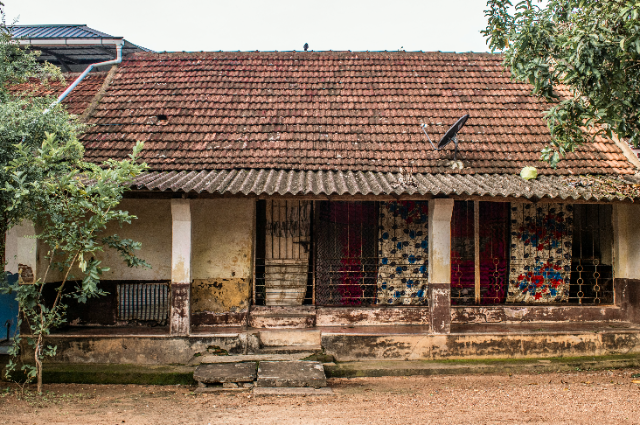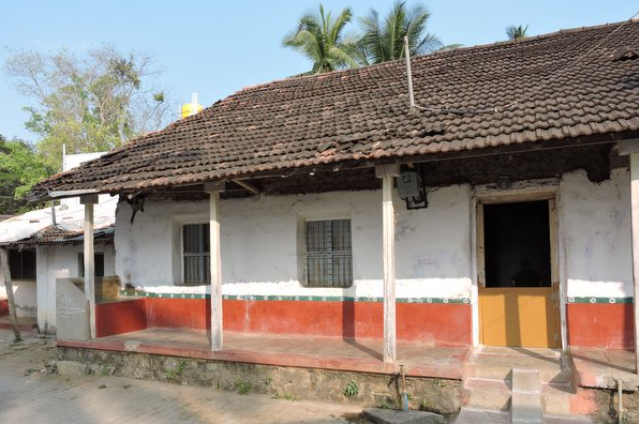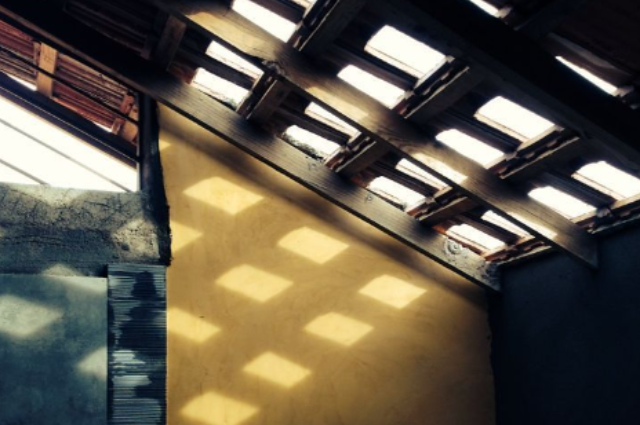
Photo by aboodi vesakaran on Unsplash
As the first light painted the Bengaluru sky, an eagerly anticipated adventure awaited my family. At 5:30 a.m., with excitement coursing through us, my mother, sister, and I boarded the train, leaving our father behind, his figure diminishing on the platform. The rhythmic clatter of the train marked the commencement of our annual pilgrimage.
By 2:00 pm, under the scorching sun at its zenith, we would disembark, endure a sweltering bus ride, and finally arrive at Lakkavalli—a village nestled affectionately along the Bhadra River's gentle yet firm embrace.
As we step into the 'hanchin mane,' (where the roofs are adorned with baked clay tiles called 'Hanchu' in Kannada), the world transforms. The red oxide floors, as cool as mountain streams, welcomed our bare feet, and a gentle zephyr swept through the house, whispering secrets of generations.
It was a place where my grandparents had woven the tapestry of their lives, where my mother and her siblings had etched their childhood memories. Every nook and cranny of the house bore the marks of careful consideration, crafted not just for aesthetics but to cradle the weary souls that sought shelter within.
Nostalgia enveloped me like a warm embrace as I reminisced about the wooden logs on the ceiling, our time-worn companions that once held down our grandmother’s old sarees as we swung with joy and bickered over whose turn it was.
Climbing a sturdy wooden ladder and crouching beneath the ceiling to retrieve large utensils or fetch Appala (pappadam) from the "hatta" (a storage space in the ceiling) were rites of passage for the young ones.
The single glass square between the roof tiles in the ceiling served as a portal to the morning sun or the orchestral thunderstorms during the monsoon. Light filtered through the glass in perfect harmony with nature, providing just the right amount of light needed at different times of the day.
As enchanting as the mornings were, the midnight trip to the distant toilet was a thrilling adventure we never dared to undertake alone. Our sprint back indoors, with doors slamming, still evokes laughter. Sometimes, in the heart of the hot summer nights, I'd press my palms against the chilled red oxide floor, savoring its fleeting coolness.
The stars and the moon, felt like benevolent guardians, their celestial embrace especially intimate during the nights we slumbered by the “katte” (steps) by the front door. And when the dam gates remained open overnight, the distant rumble from the Bhadra River lulled the entire village into slumber.
That house, our home, was reborn as a two-story concrete structure a few years ago, but its essence endured. Today, only a fragment remains—a solitary shed adorned with the same old tiles. Those tiles, once the stage for our guava-harvesting escapades on the roof, now cradle the moss and lichens.
The diminutive 4ft doors, demanding a respectful bow before entry, the vertical-barred windows illuminated by kerosene lamps, and the caves carved into the walls that served as cupboards with wooden doors, stand as venerable relics of a bygone era, each page in the story of our lives.
As the world becomes a global village, will these structures be replaced by newer constructions, or will they survive only as museum displays? Just as invasive species dominate native flora, international architecture now dominates skylines from Mumbai to Dubai, Singapore, and New York, regardless of local climate, culture and history.
The design of a residence is influenced by the eco-cultural interaction with its environment, and conversely, the environment is shaped by the design choices made for the residence. Many ancient works, including the Vedas and Vastu Purana, provide guidelines that reflect the way of life established through generations of collective experience, while also considering the climate and creative use of local climate, natural resources, religious and social customs.
The same house, standing as a timeless witness, cradles distinct memories for my mother, different from mine. Her childhood, a tapestry of both joy and responsibility, often required her, as the eldest daughter, and her sisters to sprint home from school, their young feet racing to complete daily chores.
Cleaning the entire house, crafting cow dung cakes for fire, scraping walls and applying fresh coats of sunna (lime) over it, leaving behind blisters in their palms, became part of their rhythm. The kitchen walls bore the smoky scars and the charred imprints of years gone by the fireplace. It was a place where they used unyielding grinding rocks to prepare batters to chutneys . The toilets and bathrooms lacking basic necessities were never quite the bastions of security.
Houses like these demanded relentless physical toil, here particularly for a single mother toiling in the fields for daily wages and her daughters aching to study.
Balancing tradition and modernity poses an inherent contradiction in our country. To address the challenges of the twenty-first century, we must seek out vernacular models for sustainable development, combining historical indigenous knowledge with modern technology. Globalization and consumerism challenge India's variety and pluralism, particularly among the youth, undermining indigenous customs.
Now, as I reflect upon it, I see how the scars and tribulations of those days have been tenderly mended and healed in the hearts of my mother and her family by the arrival of the new concrete abode in all its glory. Yet, a yearning lingers a shared sentiment that binds all our hearts. We miss the old house, a place of ineffable charm. If only we could conjure a fusion of both worlds, we'd embrace it in a heartbeat.


